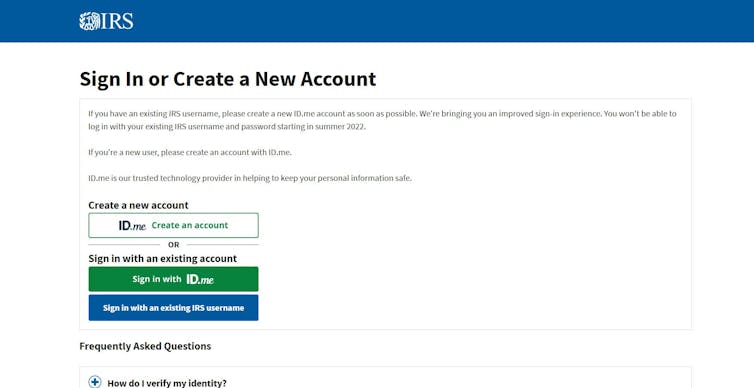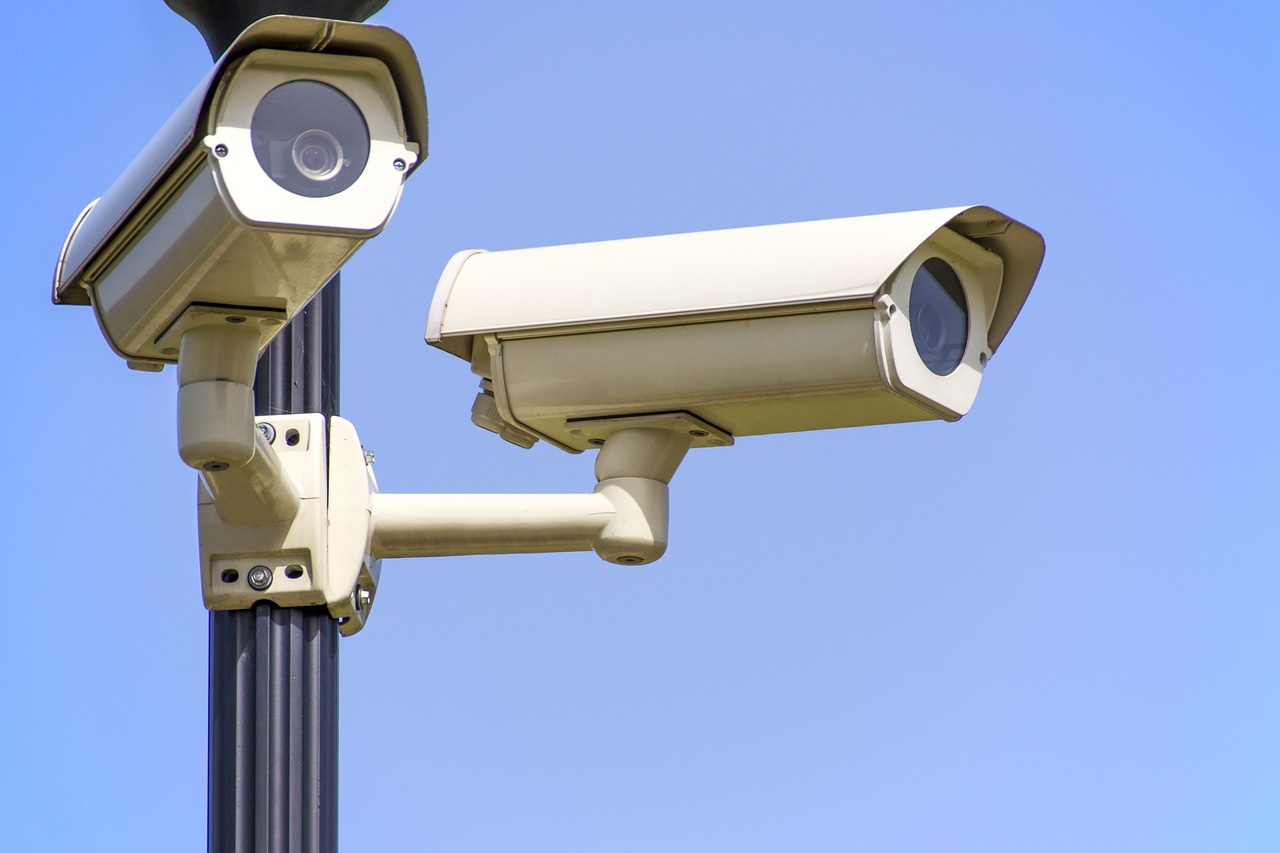● NEWS ● #Techdirt #IRS ☞ IRS Says It Will Move Away From Requiring ID.me #FacialRecognition https://www.techdirt.com/articles/20220207/11575148432/irs-says-it-will-move-away-requiring-idme-facial-recognition.shtml
#facialrecognition
● NEWS ● #CounterPunch #Surveillance #Privacy ☞ Government Agencies are Tapping a #FacialRecognition Company to Prove You’re You: Here’s Why That Raises Concerns About Privacy, Accuracy and Fairness https://www.counterpunch.org/2022/02/03/government-agencies-are-tapping-a-facial-recognition-company-to-prove-youre-you-heres-why-that-raises-concerns-about-privacy-accuracy-and-fairness/
● NEWS ● #Techdirt #police ☞ #Chicago Cops Love Them Some #Facebook Sharing, According To Internal #FacialRecognition Presentation https://www.techdirt.com/articles/20220115/12463348291/chicago-cops-love-them-some-facebook-sharing-according-to-internal-facial-recognition-presentation.shtml
● NEWS ● #CNET #Privacy #Surveillance ☞ #FacialRecognition for all online #IRS accounts: What's up with ID.me? https://www.cnet.com/personal-finance/taxes/facial-recognition-for-all-online-irs-accounts-whats-up-with-id-me/
● NEWS ● #Site36 ☞ #Facialrecognition and #police records: European #biometric systems to be expanded https://digit.site36.net/2022/01/27/facial-recognition-and-police-records-european-biometric-systems-to-be-expanded/
● NEWS ● #PIA #Privacy #Surveillance ☞ How to Hide from #FacialRecognition Software with Fawkes https://www.privateinternetaccess.com/blog/hide-from-facial-recognition-software-with-fawkes/
● NEWS ● #Techdirt ☞ #CBP Proudly Announces Its #FacialRecognition Program Has Successfully Nailed A COVID Scofflaw https://www.techdirt.com/articles/20211205/16064548054/cbp-proudly-announces-facial-recognition-program-has-successfully-nailed-covid-scofflaw.shtml

Imagine if you could walk into your local Walmart and your favorite products were delivered to you before you even had to ask. Imagine the possibilities if every camera in your town was connected, and had facial recognition software that could identify you, and call up your preferences on screen before you even asked for it. Facial recognition use cases in retail are endless. Facial Recognition Use Cases in Retail
#biometrics #personalization #selfservice #retail #technology #iris #eyetracking #retailing #facialrecognition #facerecognition #facedetection #computervision
1 Comments
● NEWS ● #IndiaTimes #Surveillance #Privacy ☞ Meta to continue use of #facialrecognition feature https://cio.economictimes.indiatimes.com/news/corporate-news/meta-to-continue-use-of-facial-recognition-feature/87549021
2 Likes
● NEWS ● #InputMag #Surveillance #Privacy ☞ Meta will continue to use #facialrecognition technology, actually https://www.inputmag.com/tech/meta-will-continue-to-use-facial-recognition-technology-actually
2 Likes
1 Shares
● NEWS ● #NewYorkTimes #Privacy #Surveillance ☞ #Facebook , Citing Societal Concerns, Plans to Shut Down #FacialRecognition System https://www.nytimes.com/2021/11/02/technology/facebook-facial-recognition.html
"The Free Software Foundation of #TamilNadu ( #FSFTN ) condemned the State’s implementation of #FacialRecognition System (FRS) and said it was an abuse of an individual’s right to privacy." https://www.newindianexpress.com/states/tamil-nadu/2021/oct/25/tamil-nadus-facial-recognition-systems-slammed-over-privacy-concerns-2375328.html
● NEWS ● #Euractive #Privacy #Surveillance ☞ #Facialrecognition technologies already used in 11 EU countries and counting, report say https://www.euractiv.com/section/data-protection/news/facial-recognition-technologies-already-used-in-11-eu-countries-and-counting-report-says/
One person like that
10 Likes
1 Comments
2 Shares
I've long said that #facialrecognition accuracy is greatly overrated by the media (this helps #police and other authorities misuse and waste money) https://hackaday.com/2021/09/24/adversarial-makeup-your-contouring-skills-could-defeat-facial-recognition/
**[2109.06467] Dodging Attack Using Carefully Crafted Natural Makeup | Cornell University.
In this study, we present a novel black-box AML attack which carefully crafts natural makeup, which, when applied on a human participant, prevents the participant from being identified by facial recognition models.
https://arxiv.org/abs/2109.06467
As [Slashdot](shttps://yro.slashdot.org/story/21/09/17/2113256/researchers-defeated-advanced-facial-recognition-tech-using-makeup) explains:
Researchers have found a new and surprisingly simple method for bypassing facial recognition software using makeup patterns. A new study from Ben-Gurion University of the Negev found that software-generated makeup patterns can be used to consistently bypass state-of-the-art facial recognition software, with digitally and physically-applied makeup fooling some systems with a success rate as high as 98 percent. In their experiment, the researchers defined their 20 participants as blacklisted individuals so their identification would be flagged by the system. They then used a selfie app called YouCam Makeup to digitally apply makeup to the facial images according to the heatmap which targets the most identifiable regions of the face. A makeup artist then emulated the digital makeup onto the participants using natural-looking makeup in order to test the target model's ability to identify them in a realistic situation.
The researchers tested the attack method in a simulated real-world scenario in which participants wearing the makeup walked through a hallway to see whether they would be detected by a facial recognition system. The hallway was equipped with two live cameras that streamed to the MTCNN face detector while evaluating the system's ability to identify the participant. The experiment saw 100 percent success in the digital experiments on both the FaceNet model and the LResNet model, according to the paper. In the physical experiments, the participants were detected in 47.6 percent of the frames if they weren't wearing any makeup and 33.7 percent of the frames if they wore randomly applied makeup. Using the researchers' method of applying makeup to the highly identifiable parts of the attacker's face, they were only recognized in 1.2 percent of the frames.
2 Likes












